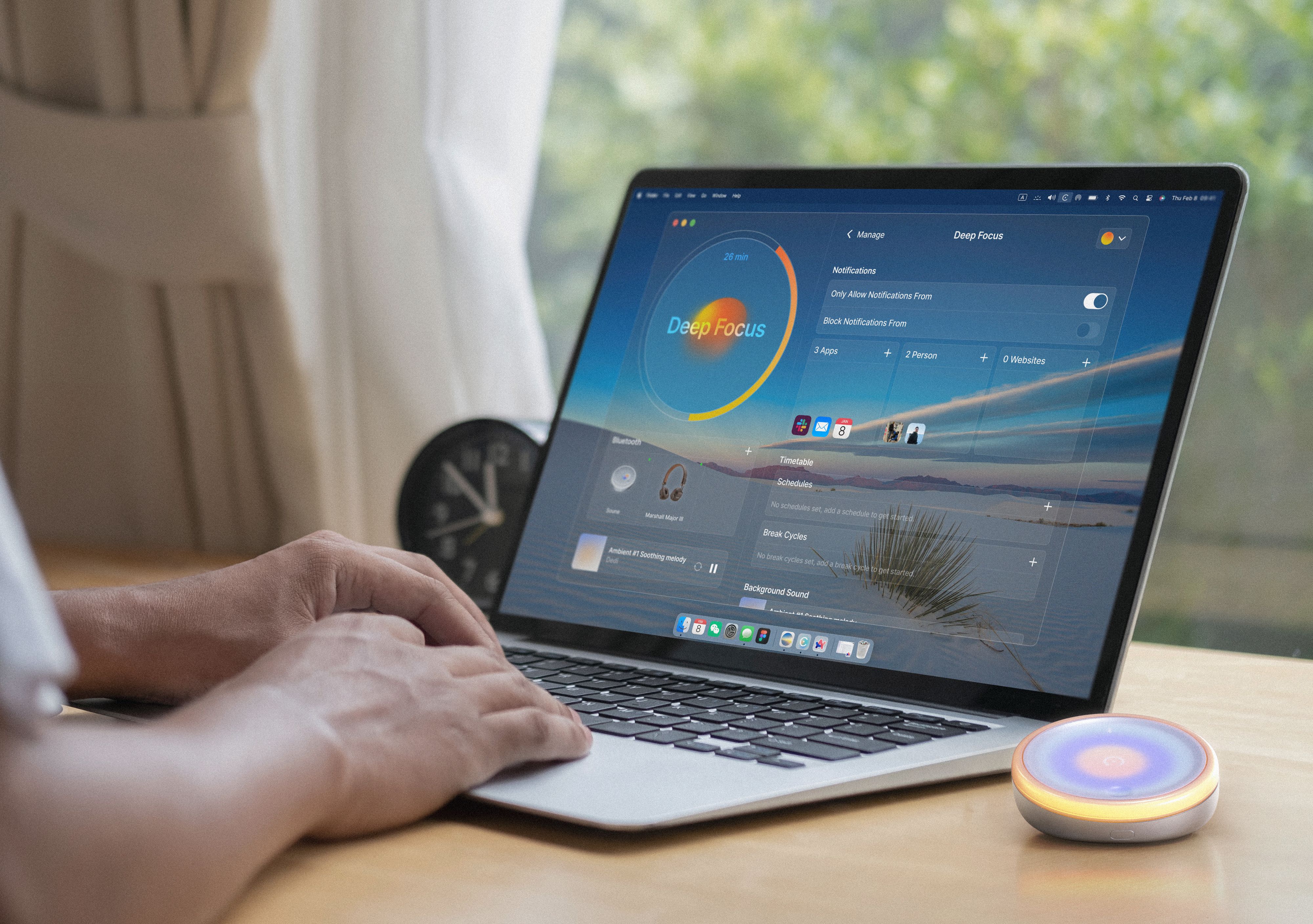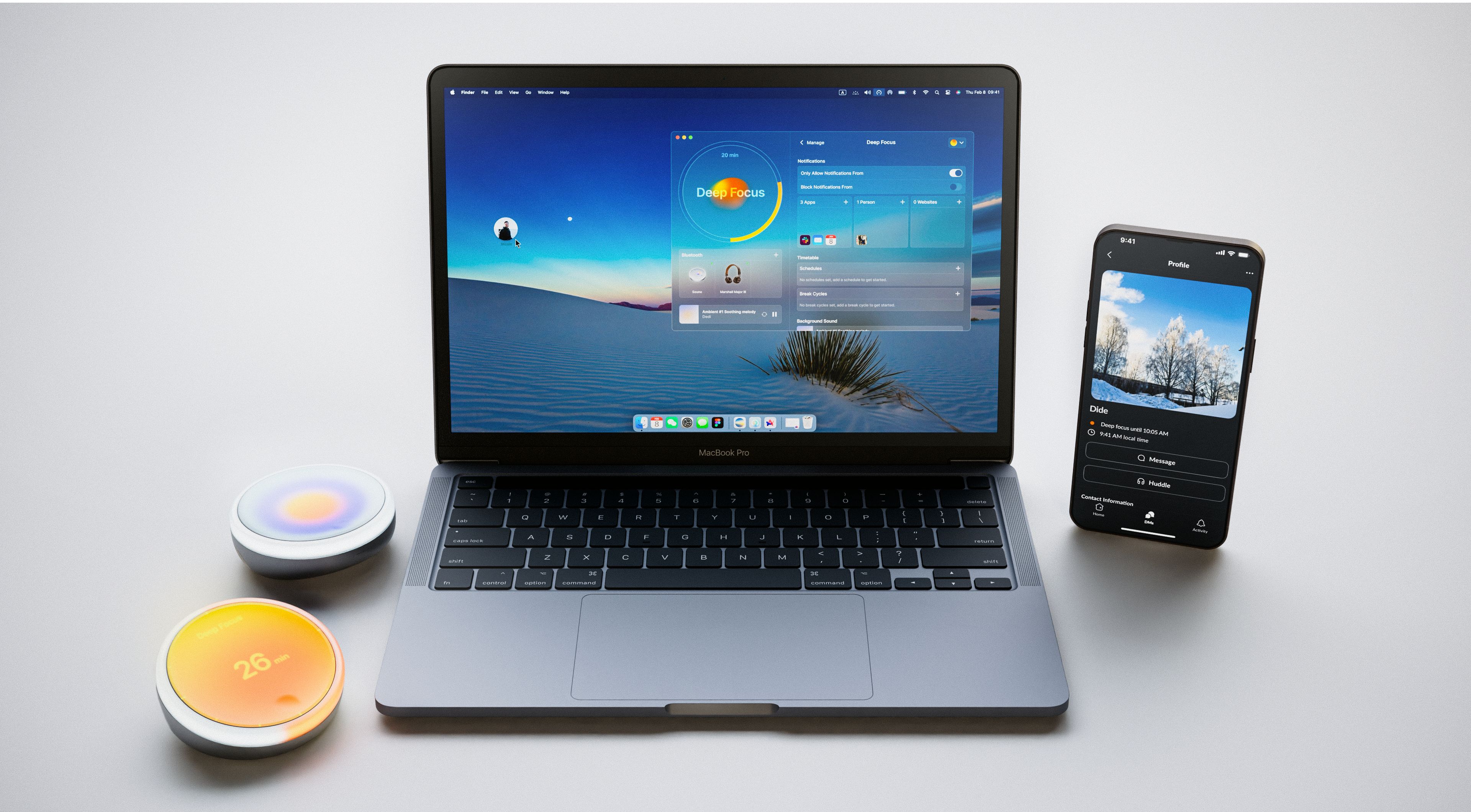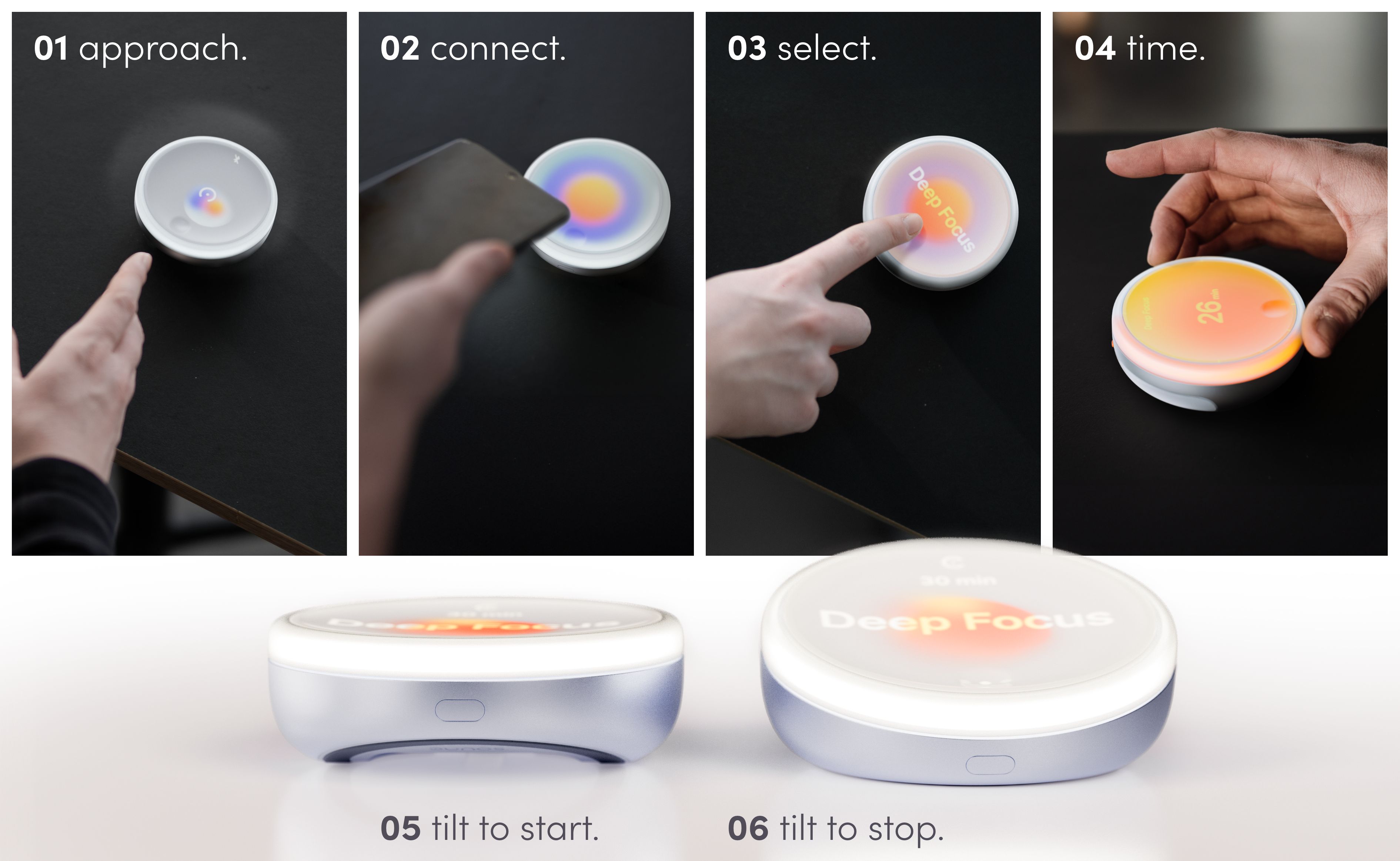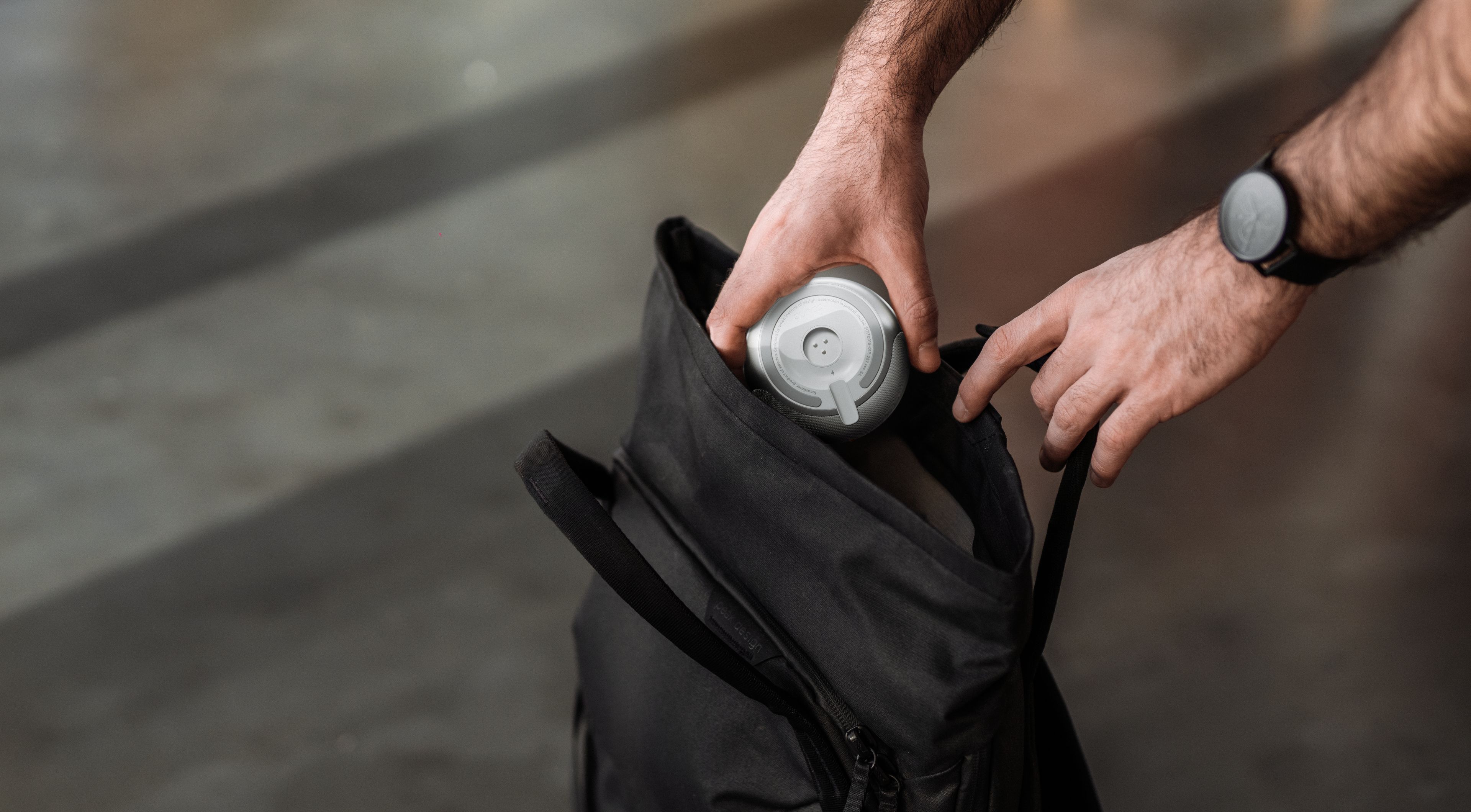
Designers
Diana Lu, Dide Sevinçok, Cosima Pauli, Nicolò Vincenzi
Year
2024
Category
New Talent
Country
Sweden
School
Umeå Institute of Design
Teacher
Thomas Degn, Andreas Estensen

Three questions for the project team
What was the particular challenge of the project from a UX point of view?
The biggest challenge was finding a smooth interaction with a logical UX flow within a limited timeframe. With only two weeks from ideation to completion and less than two days to refine the UX, we had to work efficiently. Despite these constraints, we conducted many rounds of paper prototyping and user testing to ensure the core flow was intuitive. Additionally, it was tricky to find a suitable color scheme and interaction that communicated focus status to those around the device, fit diverse environments, avoided distracting the main user, and remained easily recognizable to others.
What was your personal highlight in the development process? Was there an aha!-moment, was there a low point?
The 'a-ha' moment occurred when we discussed and tested the interaction in a real context. By blending sound, physical interaction, interface, and animations, we formed the identity and feeling of the product's usage. The sound aims to create a safe and comfortable focusing environment, while the interface supports open communication of the user's current focus level to their surroundings. Besides, testing the interface on a 3D-printed physical model allowed us to validate the interaction intuitively. The 'tilting action' to initiate focus mode and communicate status was well-received. Finding the ideal size for the device was a challenge, as it took several iterations to achieve the balance between portability and good tactile feedback.
Where do you see yourself and the project in the next five years?
Soune supports focus rituals in open working spaces and, with the rise of hybrid and remote work, serves as a transparent communication tool to convey people’s current focus to their surroundings, valuing their time and well-being. In five years, we envision Soune being used in open spaces like cafes, co-working offices, and homes by people from various fields, including our initial user group of designers. This will help prevent burnout, establish individual focus habits, and foster healthy communication. As open spaces continue to evolve, better solutions than space dividers and headphones will be necessary. With potential changes in color schemes and different CMF options, Soune could become a focus companion present in most offices.


